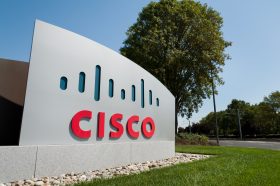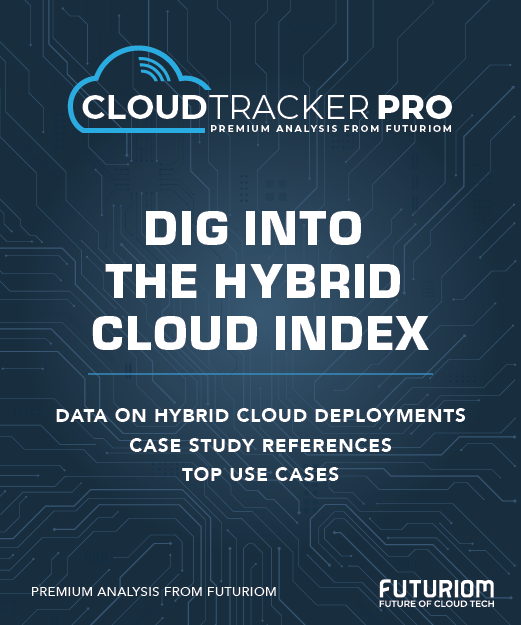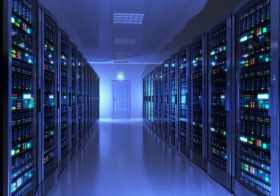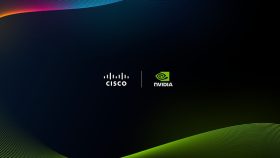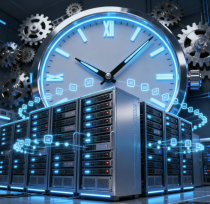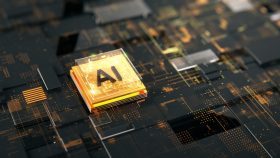Cisco Doubles Down on NVIDIA AI, Portfolio Integration

In news releases, demonstrations, and talks at Cisco Live, networking industry giant Cisco has demonstrated that it's making serious efforts to integrate its networking and security portfolios as well as doubling down on its partnership with NVIDIA to become a major player in AI infrastructure.
That’s this analyst’s takeaway so far from the news streaming out of Cisco Live, where Cisco unleashed its usual torrent of product announcements. The annual conference also shows the influence of Jeetu Patel, Cisco’s President and Chief Product Officer, who has been instrumental in the company's new energy on the product side.
With key announcements about networking fabric integration and open talk about its prior failings to integrate its portfolio, Cisco is addressing some of the common gripes of the Cisco community that we have outlined in our Futuriom research, such as lack of integration among product lines and overly complex technologies. With a massive reorg last year that consolidated resources and gave Patel more power, Cisco moved to fix some of the issues we had highlighted earlier in the year.
Some of the key new announcements include the introduction of a new centralized networking management dashboard, including Nexus Fabric and Nexus Dashboard; progress in integrating Cisco's networking products with NVIDIA; and a host of AI-driven management products for areas such as NetOps and security.
The Rundown… from AI to Security
First, let’s start with some key announcements. Cisco turned on the usual Cisco Live firehose of press releases, blogs, and marketing jargon, which even included some terms we thought had been abandoned, such as Software Defined Network (SDN)—which was mentioned several times!
SDN is apparently key to Nexus Fabric, which is addressing some long-needed fixes in integrating with Cisco’s other software products, such as Applications Centric Infrastructure (ACI). But that was just part of the news. More emphasis was placed on Cisco's new partnership with NVIDIA, announced earlier this year, as well as improvements in AI Operations (AIOps) and network security integration.
Let’s quickly hit the ones that stood out to us:
AI Networking Platform. Cisco released more details about its partnership with NVIDIA, which now looks like the linchpin of its AI networking strategy. The companies showcased their integration efforts in Cisco’s Secure AI Factory with NVIDIA, including full-stack AI solutions supporting edge, RAG, training, and large-scale inferencing. A key technical element included the promise of 400G bidirectional (BiDi) optics in the second half of the year.
Networking Fabric Integration. The company announced Cisco Nexus Dashboard, which provides centralized datacenter network operations and automation across Nexus, MDS, and ACI fabrics. The goal is to provide network operators more flexibility as well as an integrated approach to managing VXLAN-EVPN and ACI fabrics.
AIOps and NetDevOps. Cisco is adopting AI for NetOps and NetDevOps, including Cisco AI Canvas, an “industry-first generative user interface” for real-time collaboration between network and security operations teams. It also introduced Cisco AI Assistant, which provides conversational control across the Cisco suite.
Embedded Security. Cisco still has a complex array of security approaches and products, but it tried to shed light on further integrations of networking and security with Hypershield and Hybrid Mesh Firewall, which aim to embed security and policy control directly into network fabrics. For example, Cisco announced that it has extended Hybrid Mesh Firewall enforcement to the Cisco ACI fabric by integrating Cisco Secure Workload with Cisco ACI.
Key Changes to the Strategy
One of the takeaways from Cisco Live is that at a higher level, Cisco has shifted the emphasis in its product strategy and is now more focused on integrating internally where it makes sense and partnering externally where it's necessary.
The powerful partnership with NVIDIA is a key element, because it has gone a long way to giving the market more confidence about Cisco’s AI infrastructure strategy, where it can lean on NVIDIA’s strengths in DPUs and generate more revenue from its own proprietary chip platform, Silicon One. Cisco needs a strong AI story, as fierce competition has ramped up in the AI networking marketing, ranging from the potential HPE-Juniper Networks tie-up to the strength of NVIDIA and Arista Networks in the market. In addition, a range of startups including Arrcus, DriveNets, Aviz Networks, and Hedgehog are also getting in on the AI networking action as customers look for a wide range of solutions ranging from building massive AI pods to inferencing at the edge. Read up on our exhaustive Networking Infrastructure for AI report for all the details.
Cisco said Its next generation of switches will include NVIDIA Spectrum application-specific integrated circuits (ASICs), which can work with the newest versions of Cisco's datacenter switch operating system, NX-OS.
On the networking front, Cisco announced new efforts to integrate management interfaces for datacenter fabrics. Cisco says its Nexus One Fabric provides a consistent fabric across diverse datacenter architectures. And the Nexus Dashboard now acts as a single point of control, "consolidating all the previous services, streamlining operations and enhancing security across multiple fabric architectures with Nexus One." To translate Cisco market-speak for mere humans, Cisco Nexus now enables networking engineers to use one management platform to spin up networking overlays to connect across datacenter environments. It’s also added a VXLAN gateway to its ACI.
The integration work is refreshing and something we’ve been asking about for years. It’s a need that’s been highlighted in our many interviews with customers, which has driven many of them to look at competing solutions—see our recent paper for Extreme Networks.
Futuriom Take: Cisco announced an impressive array of new product features and partnership efforts, with a message about integration that should comfort its customers. However, the NVIDIA partnership needs to be monitored to see if it delivers financial gains, and Cisco still has more work to do in rationalizing somewhat overwhelming product lines and management interfaces in enterprise networks and security.


